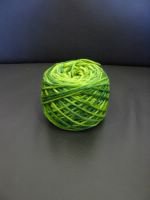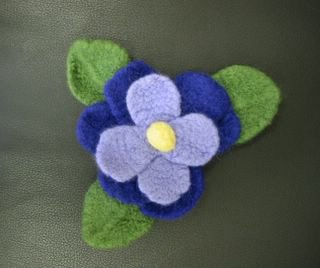This weekend I convinced my DH Ian that it would be fun to try our hand at dying some wool. I saw an episode on
Knitty Gritty about it and it inspired me. I went to
The Knitting Room and got some natural yarn to dye (
Cascade 220,
Cascade Pastaza &
Manos Del Uraguay). Then I went to the
Rug & Yarn Hut to buy some books and dye. Karen at the Rug & Yarn Hut was really helpful in explaining the process.
So we started with natural, undyed wool, which I tied with scrap cotton yarn to prevent more tangling then necessary.



 Top Row: Cascade 220 in Color 8010, Cascade 220 in Color 8021
Top Row: Cascade 220 in Color 8010, Cascade 220 in Color 8021
Bottom Row: Cascade Pastaza in Color 001 & Manos Del UruguayWe decided to only dye a few skeins, so that we could take our time and play a bit with different techniques. So Ian chose to work with a half-skein of Cascade 220 in color 8010 (white) and I worked with a half-skein of Cascade 220 in color 8021 (tan) and a skein of Cascade Pastaza in color 001 (white).
I'm planning to knit Ian a Christmas stocking (definitely not in time for this Christmas) and so he wanted me to make it out of yarn we dyed. So Ian used a tied-dyed technique of wrapping plastic bag strips at random all over the yarn and then dropping the yarn into a pot with different amounts of red dye. He would then remove the yarn at intervals and add more bag strips.

 Red & Green Cascade 220
Red & Green Cascade 220I used a similar technique, but with green dye, the Cascade 220 in a tan color and using a glass dish (w/lid) in the microwave. I also did a few more dips then Ian did, and added AND removed strips between each stint in the Microwave. We'll need to do several more skeins to have enough for a stocking, but at least we have the process down.
For the Cascade Pastaza I wanted to create a yarn with my favorite colors - Orange, Red & Yellow. It is fall after all!

Autumn Colored Cascade PastazaI started by wrapping strips around the yarn strands (rather then around all of the yarn mushed together in a ball) in an orderly fashion. That is right next to each other. I dunked my yarn in a pot on the stove with yellow dye in it first. Then I took the yarn out of the dye and removed some of the bag strips, exposing some undyed yarn, and added some bag strips over the yellow-dyed yarn. I added some red dye to the yellow dye, making a light orange color, and dunked my yarn in again. I repeated this process, each time adding more red dye and removing and adding bag strips. It was a really fun, but time consuming process.
I was worried the wool might felt in the dying process (especially with all of the lifting in and out of boiling water) but it wasn't a problem. I tried to keep that temperature even and set the yarn in hot water for 30 minutes before placing it in the dye pot, so I think that helped.
After the yarn dried I would it into balls. I can't wait to knit with it!

 Green Cascade 220 Wound
Green Cascade 220 Wound
 Red Cascade 220 Wound
Red Cascade 220 Wound
 Autumn Pastaza Wound
Autumn Pastaza Wound~ Christina





























